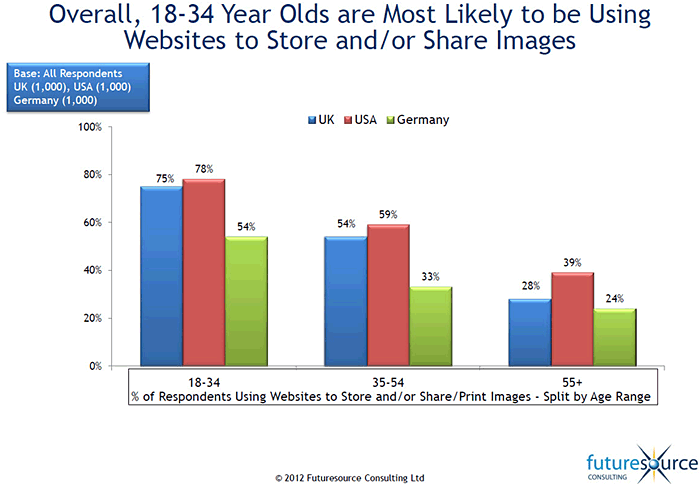By Jeremy Wills, Senior Market Analyst, Futuresource Consulting
A new wave of consumer research by Futuresource Consulting looks into image-capture and photo-sharing behaviours across the USA, Germany and the UK, showing many similarities in camera ownership and behaviour across the three countries.
Futuresource conducted 3,000 online surveys with UK, German and US consumers aged 18 and over, to review the range of devices used for capturing images and the way in which these photos are stored and shared.
Overall, nearly 90% of the total respondents share their digital images with family and friends, with on-camera and by email the most frequently mentioned methods.
Sharing images using a PC is also popular, with 41% of the people surveyed sharing by laptop, netbook or MacBook and 36% on desktop PC or Mac. The use of tablet PCs is also growing, whereas sharing images on mobile phones and smartphones is now almost as commonplace, with close to 36% of consumers across all three markets doing this.
However, sharing using a mobile messaging service provided more mixed responses across the three geographies. The US leads the way in terms of sharing by mobile messaging, with over 30% of the US sample doing this, compared to 18% of German respondents. This behaviour shows considerable variation by age demographic: of the 18 to 34 year old age group category, 44% of the sample across all three countries are using their mobile phone or smartphone to share images and 32% (close to 50% in the USA) are using phone messaging to share their images.
When it comes to storing images, desktop and laptop PCs are by far the main method in all three countries.
Sharing through websites is the other key behaviour that shows significant difference by age group category. 35% of the total sample share their digital images in this way, with the US and UK significantly ahead of Germany.
In terms of image capture, 75% to 80% of the people surveyed in each country are using their mobile phone or smartphone for image capture. When asked what they subsequently do with these images, consumers are most likely to leave their photos on the device. Other frequent behaviour includes e-mailing, uploading to Facebook or other image sharing websites, or backing up to a PC, laptop or other device.
With more than 200 billion photos stored using online services, there is a potentially lucrative opportunity to boost growth in the photobook market as well. In addition, the personal penetration of tablets in Western Europe is on track to reach 22% by 2015, meaning opportunities for the photobook industry continue to develop. In addition, many service providers are launching apps and working with social networks.



